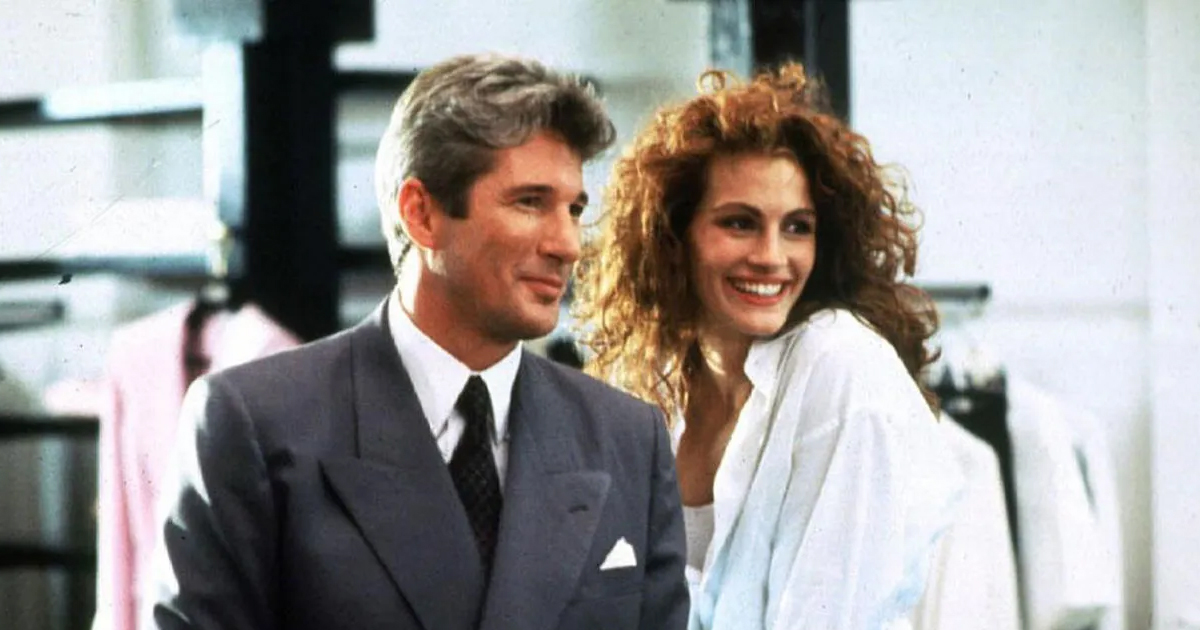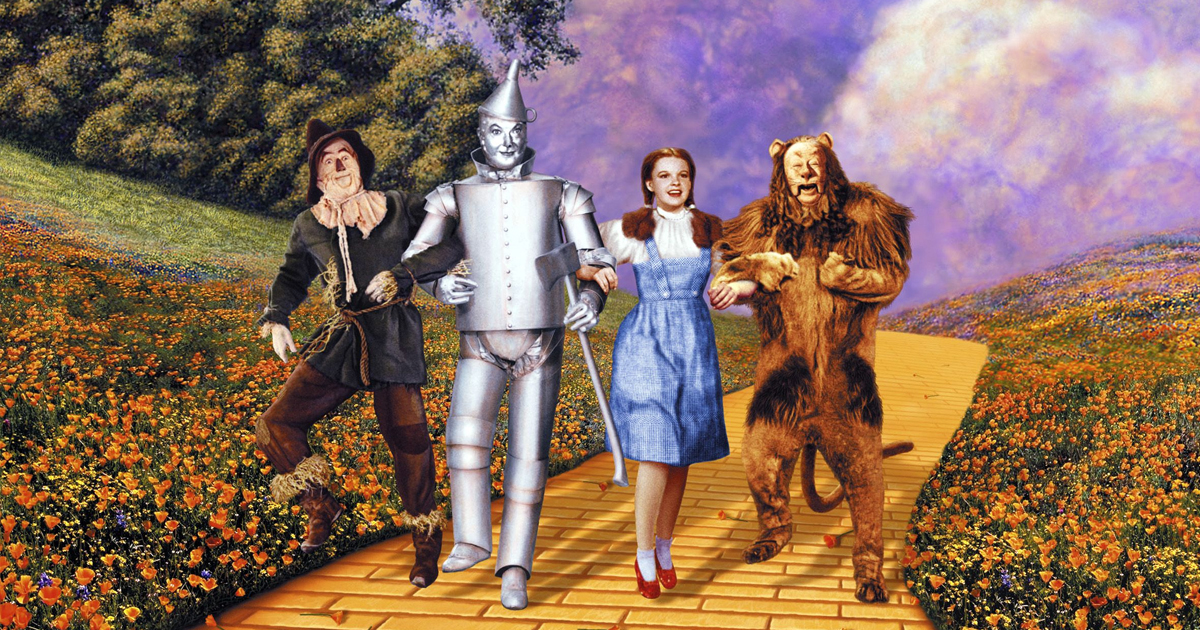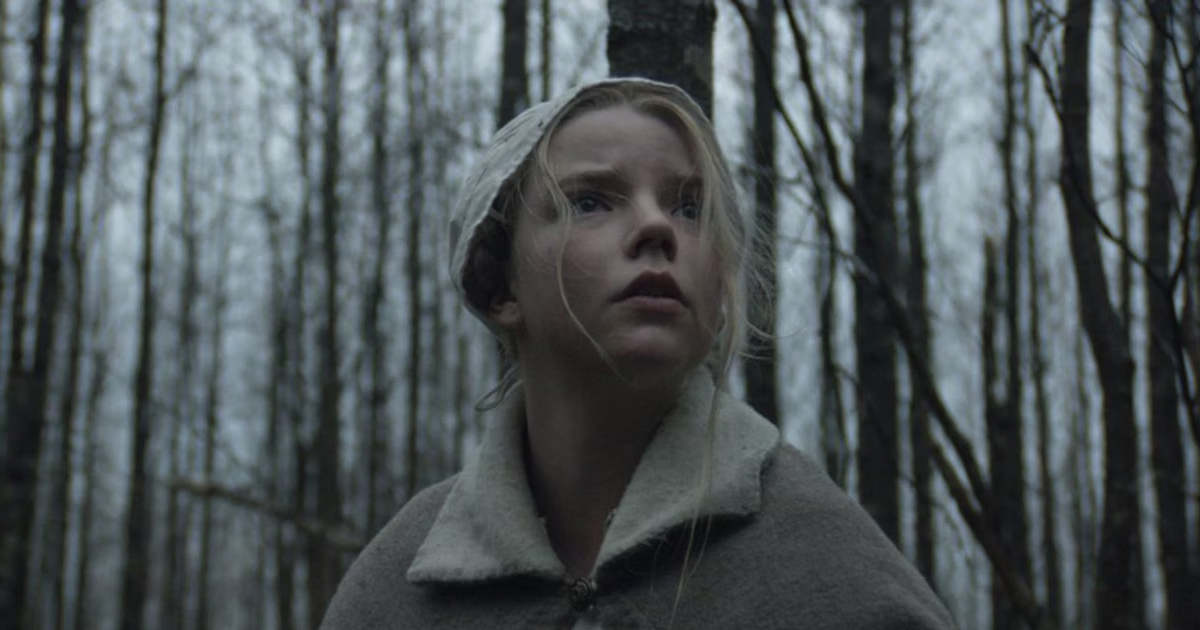The Science Behind The Sitcom
The Big Bang Theory was more than just quirky characters and jokes because the show employed David Saltzberg, a real science consultant, who ensured the facts were accurate.

Schrodinger's Cat
Leonard compared his relationship with Penny to Schrodinger's Cat, an experiment where a cat in a box that's sealed from all sides is both alive and dead until observed. It reflects how, in quantum physics, things can exist in multiple states until you actually observe and confirm. Uncertainty can be both romantic and scientific, y’know?
Doppler Effect
Scientists use the Doppler Effect to determine if stars are moving closer or farther away by studying changes in the light they emit. It also explains why a siren sounds different as it moves past. For Halloween, Sheldon dressed up as this idea, which, obviously, left most people scratching their heads.
 Best of The Big Bang Theory - The Doppler Effect P2 by Old & Young Sheldon
Best of The Big Bang Theory - The Doppler Effect P2 by Old & Young Sheldon
String Theory
Sheldon championed string theory, which proposes that everything is made of tiny vibrating strings instead of particles. The theory aims to unify gravity with quantum physics. Though unproven, its elegance and potential make it a favorite among physicists—and a frequent topic in Sheldon’s conversations.
 Penny Solves String Theory - The Big Bang Theory (English HD) by Edgar Vega
Penny Solves String Theory - The Big Bang Theory (English HD) by Edgar Vega
Higgs Boson
The Higgs boson helps explain why objects have mass, and its discovery in 2012 confirmed a key aspect of particle physics. In The Big Bang Theory, the guys brought it up while discussing the Large Hadron Collider, which proved this once-theoretical particle was real.
 The Big Bang TheoryThe Higgs Boson1 by comedybites321
The Big Bang TheoryThe Higgs Boson1 by comedybites321
Quantum Entanglement
Scientists have tested quantum entanglement numerous times, and it is now being used to protect computer systems from hackers. It means two tiny particles can stay connected even across great distances. If one changes, the other does too. Sheldon called it spooky, and that's not far from the truth.
 The Big Bang Theory - Quantum Physics makes Sheldon happy [HD] by Qashi
The Big Bang Theory - Quantum Physics makes Sheldon happy [HD] by Qashi
Multiverse Theory
Inside the comic book store, Sheldon and the gang often debated what might exist beyond our world, and that's where the multiverse theory came in. It suggests that many universes, not just ours, could exist. This idea originates from space science and quantum physics, although proof is still lacking.
 Multiverse Brain Teasers | The Big Bang Theory by Big Bang Theory
Multiverse Brain Teasers | The Big Bang Theory by Big Bang Theory
Game Theory
Although it may sound playful, game theory is also applied in war planning and studies of animal behavior. It examines how individuals or players make decisions while attempting to outsmart one another. Sheldon often used it to win board games and solve tricky roommate problems.
 Game Night - Pictionary (Guys vs Girls) ~ The Big Bang Theory ~ by Wozamil
Game Night - Pictionary (Guys vs Girls) ~ The Big Bang Theory ~ by Wozamil
Large Hadron Collider
In The Big Bang Theory, Raj and Sheldon dreamed of visiting the Large Hadron Collider. It is the world's biggest machine for smashing particles together, which also helped scientists prove that the Higgs boson is fundamental. This massive tunnel stretches 27 kilometers underground near the border between France and Switzerland.
 Sheldon is a no go for Switzerland! TBBT S3E15 by It's The Big Bang Theory
Sheldon is a no go for Switzerland! TBBT S3E15 by It's The Big Bang Theory
Laws Of Thermodynamics
These laws explain how energy behaves, whether it’s powering engines or melting ice cubes. The first states that energy cannot be created or destroyed, and the second states that disorder in an isolated system always increases. As a result, energy spreads out, and systems become more disordered over time.
 Leonard Broke the Elevator | The Big Bang Theory by Big Bang Theory
Leonard Broke the Elevator | The Big Bang Theory by Big Bang Theory
Occam's Razor
Scientists often use Occam's Razor when testing ideas, as it reminds them not to add unnecessary elements. It states that the most straightforward answer is usually the best one. Sheldon liked to quote it when others gave silly answers. While not a scientific law, it supports good thinking.
Black Holes
In one episode, the group had an intense discussion about what could occur if someone fell into a black hole. These enigmatic objects have gravity so powerful that even light can't escape, and scientists detected them by studying the movement of nearby stars.
 BBT - What's the difference between Sheldon and black hole by BeyoTheQ
BBT - What's the difference between Sheldon and black hole by BeyoTheQ
Newtonian Mechanics
Newtonian mechanics help us understand phenomena such as falling apples and car crashes, and they remain effective in everyday situations. Leonard mentioned them when the elevator broke, which gave science a funny moment. Even though scientists now employ newer ideas for space and tiny particles, these laws still hold significance.
 The Big Bang Theory: Elevator (Clip) | TBS by TBS
The Big Bang Theory: Elevator (Clip) | TBS by TBS
CRISPR Gene Editing
In an episode, Amy talks about CRISPR, which is inspired by a bacterial defense system that lets scientists cut and edit precise DNA sequences like scissors. During a biology debate in the show, it was explained how this real-world tool is used to enhance crops and address certain inherited medical conditions through targeted gene editing.
 The 'Genius' Biologist | The Big Bang Theory | Comedy Central Africa by Comedy Central Africa
The 'Genius' Biologist | The Big Bang Theory | Comedy Central Africa by Comedy Central Africa
Superconductivity
Superconductors are basically materials that lose all resistance to electricity when cooled to extremely low temperatures. That means energy moves through them without anything slowing them down. This idea, discovered in 1911, is used in real-life applications such as MRI machines and high-speed trains.
 13 Experiments That Went Totally Off the Rails | The Big Bang Theory by Big Bang Theory
13 Experiments That Went Totally Off the Rails | The Big Bang Theory by Big Bang Theory
fMRI Ad Neural Imaging
Amy showed off brain scans in one episode, and she used something called fMRI. This tool measures the blood flow to different parts of the brain while a person is thinking. Scientists use it to learn how the brain works, although it's not easy to understand what the pictures mean.
 The Big Bang Theory 10x11 Sneak Peek The Birthday Synchronicity (HD) by TV Promos
The Big Bang Theory 10x11 Sneak Peek The Birthday Synchronicity (HD) by TV Promos
Special Relativity
Scientists have proven special relativity using particle clocks and observing how GPS satellites remain accurate. This idea, proposed by Einstein, suggests that space and time are distorted depending on the speed of an object. Sheldon often explained it by talking about time slowing down for people riding fast-moving trains.
 The Big Bang Theory The Einstein Approximation1 by comedybites321
The Big Bang Theory The Einstein Approximation1 by comedybites321
Heisenberg's Uncertainty Principle
When Sheldon tried to explain life's unpredictability, he referenced a fundamental scientific principle known as Heisenberg's uncertainty principle. It states that you can't know both the position of something and its momentum at the same time, and that makes a significant difference in the world of tiny particles.
 Sheldon Can’t Stand Penny’s Messy Apartment (Clip) | The Big Bang Theory | TBS by TBS
Sheldon Can’t Stand Penny’s Messy Apartment (Clip) | The Big Bang Theory | TBS by TBS
Scientific Method
Sheldon once used the scientific method to study friendship, even if it was a somewhat silly endeavor. The process begins with a question, followed by a process of guessing and checking the results. It's how scientists make sure they aren't just guessing—and they always need others to double-check their findings.
 The Big Bang Theory - The Friendship Algorithm by Ethang1103
The Big Bang Theory - The Friendship Algorithm by Ethang1103
Robotics
As an MIT-trained aerospace engineer, Howard’s robotic prowess lands him actual NASA work—like designing the robotic arm used on the International Space Station. But, true to sitcom form, his genius sometimes short-circuits. Remember the robot arm that got stuck down “there”?
 Howard is Stuck in a Robot Hand | The Big Bang Theory by Big Bang Theory
Howard is Stuck in a Robot Hand | The Big Bang Theory by Big Bang Theory
Chaos Theory
When the group encountered messy problems, they invoked chaos theory, which explains how tiny changes can lead to unexpected outcomes. A slight shift might cause a chain reaction. In real life, this helps explain weather patterns and system breakdowns, where things seem random and, therefore, hard to predict.
 The Big Bang TheoryThe Convergence Convergence1 by comedybites321
The Big Bang TheoryThe Convergence Convergence1 by comedybites321
Dark Matter
Scientists believe that dark matter accounts for a significant portion of the universe, and they detect its gravitational influence on stars and galaxies through its invisible presence. Leonard brought it up when explaining things we can't see but still know are there, even though it's never been seen directly.
 Funny Moments from Every Season of 'The Big Bang Theory' – Part 1 by Big Bang Theory
Funny Moments from Every Season of 'The Big Bang Theory' – Part 1 by Big Bang Theory
Antimatter
In a deep space chat, the gang mentioned antimatter—a real thing that sounds like science fiction. It's made of particles that are like opposites to the ones we know. When matter and antimatter collide, they annihilate each other and release energy. Today, scientists use it in various forms of research.
 Sheldon Is in Charge of Raj’s Finances | The Big Bang Theory by Big Bang Theory
Sheldon Is in Charge of Raj’s Finances | The Big Bang Theory by Big Bang Theory
DNA Sequencing
Tiny instructions inside every living thing hold the key to how life works, and scientists read these using a method called DNA sequencing. It helps them trace their health and history. Amy once explained this during a discussion by linking it to early work, such as the Sanger method.
 The Big Bang Theory 10x08 Sneak Peek The Brain Bowl Incubation (HD) by TV Promos
The Big Bang Theory 10x08 Sneak Peek The Brain Bowl Incubation (HD) by TV Promos
General Relativity
This theory suggests that gravity isn't a force but rather the way space bends around massive objects, altering our understanding of motion near planets—as explained during one of Sheldon’s long rants. It was published in 1915 and was later proven by watching lights bend and clocks slow.
 Sheldon and Penny Moments from Every Season of 'The Big Bang Theory' by Big Bang Theory
Sheldon and Penny Moments from Every Season of 'The Big Bang Theory' by Big Bang Theory
Nanotechnology
Nanotechnology aids in medicine and materials by directly shaping atoms, and it deals with things so small that they can't be seen with regular tools. Scientists, and engineers like Howard, control these tiny changes using powerful microscopes that allow them to see at the atomic level.
 The Big Bang Theory - The Military Miniaturization S10E02 [1080p] by Qashi
The Big Bang Theory - The Military Miniaturization S10E02 [1080p] by Qashi
Kepler's Laws Of Planetary Motion
Johannes Kepler, a German astronomer, figured out how planets move by using notes collected by Tycho Brahe. He learned they follow stretched-out paths, not circles. These became Kepler's laws. Raj once brought them up during a conversation, and for once, he got it right.
 Raj's Best Moments! | The Big Bang Theory by Warner Bros. TV
Raj's Best Moments! | The Big Bang Theory by Warner Bros. TV
Ionizing Radiation
When lab safety was discussed, the topic of ionizing radiation was also addressed. It's the kind of energy that can knock electrons off atoms, which makes it worthwhile but risky. In the show, Sheldon and Leonard referenced it when they worked with X-rays and shielding equipment.
 Sheldon's Un-unravelable lie | The Big Bang Theory #thebigbangtheory #hd by Secret Fun Paradise
Sheldon's Un-unravelable lie | The Big Bang Theory #thebigbangtheory #hd by Secret Fun Paradise
Peer Review And Scientific Publishing
Sheldon loved bragging about journal articles, but publishing science isn't simple. Scientists must share their work with others to verify its validity and credibility. This process, known as peer review, helps prevent mistakes from being included in papers. Still, it can be slow and unfair, even though it's necessary.
 The Citation negation || The Big Bang Theory by The World Of Bloopers
The Citation negation || The Big Bang Theory by The World Of Bloopers
Probability Theory
In one episode, Sheldon explained why some games feel rigged—they follow a set of probabilities. This math studies how likely things are to happen, whether it's a coin flip or a weather report. It's essential for science, and even in quantum physics, where nothing is entirely certain until it's observed.
 The Scavenger Hunt Puzzle | The Big Bang Theory by Big Bang Theory
The Scavenger Hunt Puzzle | The Big Bang Theory by Big Bang Theory
Photosynthesis
Inside plant cells, a green substance called chlorophyll helps them convert sunlight into sugar. It's called photosynthesis, as explained by Amy during a scene about plant biology. This process also produces oxygen, and without it, clean air and food-chain energy literally wouldn't exist.
 Amy's Best Moments | The Big Bang Theory by Warner Bros. TV
Amy's Best Moments | The Big Bang Theory by Warner Bros. TV
Chemical Bonding
When the group explained atoms, they compared them to ingredients in a recipe because chemical bonds are what hold those ingredients together. These include ionic and metallic bonds, and they shape how molecules form. Science is all about studying how these materials behave, along with their potential reactions.
 Funny Moments from Every Season of 'The Big Bang Theory' – Part 1 by Big Bang Theory
Funny Moments from Every Season of 'The Big Bang Theory' – Part 1 by Big Bang Theory
Time Travel Paradoxes
In one scene, Raj and Sheldon get caught up in a debate about time travel. They mentioned the grandfather paradox, where someone travels back in time and changes events, potentially preventing their own birth. Scientists refer to this as a paradox, but there's no real proof that it can happen.
 Back to the Future Explained | The Big Bang Theory by Big Bang Theory
Back to the Future Explained | The Big Bang Theory by Big Bang Theory
Bioethics
Bioethics raises questions about the fairness and the safety of science, particularly when human subjects are involved in testing. Scientists must respect personal choices in order to avoid harm, and review boards must ensure that the rules are followed. Even the gang believes that science needs boundaries.
 Unforgettable Sheldon Cooper Moments (Seasons 4-6) | The Big Bang Theory by Big Bang Theory
Unforgettable Sheldon Cooper Moments (Seasons 4-6) | The Big Bang Theory by Big Bang Theory
The Standard Model
Sheldon once filled the whiteboard with a detailed particle chart to illustrate how the Standard Model connects all the elements. It explains how things like quarks and force carriers interact. While it covers most of modern physics, it still doesn't explain gravity or the mystery of dark matter.
 Funny Moments from Every Season of 'The Big Bang Theory' – Part 1 by Big Bang Theory
Funny Moments from Every Season of 'The Big Bang Theory' – Part 1 by Big Bang Theory
Machine Learning (Artificial Intelligence)
In Season 2, Sheldon and Raj worked on a computer that learned on its own, a concept known as machine learning. It means the computer analyzes patterns in data so it can continually improve. Unlike regular coding, it facilitates tools such as face recognition and voice assistants.
 Sheldon Interviews Raj | The Big Bang Theory by Big Bang Theory
Sheldon Interviews Raj | The Big Bang Theory by Big Bang Theory
Evolution By Natural Selection
Fossil records and genetic data show how species have changed, and this supports evolution by natural selection. Amy once used Charles Darwin’s concept to explain that primate beings slowly change over time, and those who fail to adapt to new surroundings perish.
 Funny Moments from Every Season of 'The Big Bang Theory' – Part 1 by Big Bang Theory
Funny Moments from Every Season of 'The Big Bang Theory' – Part 1 by Big Bang Theory
Exoplanet Detection
Scientists find new planets by tracking tiny wobbles or changes in starlight, a method known as exoplanet detection. Since the 1990s, thousands have been confirmed. Raj was thrilled whenever he mentioned it, mainly because these worlds might offer clues about life beyond Earth.
 Raj's Best Moments! | The Big Bang Theory by Warner Bros. TV
Raj's Best Moments! | The Big Bang Theory by Warner Bros. TV
Neurotransmitters And Emotions
Sheldon's flat reactions often puzzled others, and the reason is linked to brain chemistry. Chemicals such as dopamine and oxytocin play a key role in regulating and influencing our emotions and feelings. Scientists study them through brain scans, and both genes and the environment influence them.
 Sheldon and Penny Moments from Every Season of 'The Big Bang Theory' by Big Bang Theory
Sheldon and Penny Moments from Every Season of 'The Big Bang Theory' by Big Bang Theory
Interdisciplinary Research
Interdisciplinary research combines fields of science, such as biology and engineering, and it leads to discoveries that sometimes win Nobel Prizes. The group often mixed their skills during projects to show this idea in action. In real life, teamwork fuels breakthroughs in space exploration and the development of intelligent machines.
 Funny Moments from Every Season of 'The Big Bang Theory' – Part 1 by Big Bang Theory
Funny Moments from Every Season of 'The Big Bang Theory' – Part 1 by Big Bang Theory
Mathematical Proofs
Sheldon always wanted things to be exact, especially in math. That's why he cared about proofs. In mathematics, a proof demonstrates that something is always true, not just sometimes. Unlike science, which relies on tests, mathematics relies on logic. Proofs help build trust in everything from equations to prominent theories.
 Funny Moments from Every Season of 'The Big Bang Theory' – Part 1 by Big Bang Theory
Funny Moments from Every Season of 'The Big Bang Theory' – Part 1 by Big Bang Theory
Cosmological Background Radiation
When the gang discussed how the universe began, they touched on a residual glow known as cosmic background radiation. It's a faint microwave signal still around from when the universe was very young. Discovered by Penzias and Wilson in 1965, it supports the idea of a hot, dense start.
 Top 10 Funniest Moments | Big Bang Theory by Warner Bros. TV
Top 10 Funniest Moments | Big Bang Theory by Warner Bros. TV
Plate Tectonics
Earth's surface is divided into large sections, each made up of big, moving plates that slowly shift. These movements cause earthquakes and volcanoes, which is why even the tiniest shifts are tracked. Geology does not have the best rep in TBBT, but that doesn’t make it any less of a science.
 The Best of Bernadette (Mashup) | The Big Bang Theory | TBS by TBS
The Best of Bernadette (Mashup) | The Big Bang Theory | TBS by TBS
Simulation Hypothesis
The simulation hypothesis came up during a late-night discussion when the group wondered if life could be running inside a giant computer. Nick Bostrom introduced this idea in 2003, and while no evidence supports it yet, it still raises interesting questions about what reality means.
 Funny Moments from Every Season of 'The Big Bang Theory' – Part 1 by Big Bang Theory
Funny Moments from Every Season of 'The Big Bang Theory' – Part 1 by Big Bang Theory
SETI And Extraterrestrial Intelligence
Scientists scan the skies for radio signals that might originate from distant worlds, a search effort known as SETI—the Search for Extraterrestrial Intelligence. Raj often dreamed about life beyond Earth, and that made SETI feel personal. With the aid of AI and large telescopes, the search continues with newfound hope.
 Raj's Best Moments! | The Big Bang Theory by Warner Bros. TV
Raj's Best Moments! | The Big Bang Theory by Warner Bros. TV









